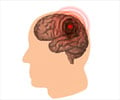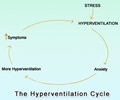Researchers at Baylor College of Medicine in Houston have identified two proteins, whose presence in the blood may indicate that a patient is at an increased risk of having a stroke.
The researchers have revealed that the two biomarkers are lipoprotein-associated phospholipase A2 (Lp-PLA2) and high-sensitivity C-reactive protein (hs-CRP), which are known to be linked with the kind of stroke that occurs when blood flow to the brain is blocked.Lead researcher Dr. Vijay Nambi, assistant professor of medicine-atherosclerosis and vascular medicine at BCM, revealed that his team studied 949 people taking part in the Atherosclerosis Risk in Communities study (ARIC), a large scale study designed to investigate the causes and course of atherosclerosis. Of those, 183 developed a stroke.
He said that the results of the blood tests conducted on the patients showed that testing for the two inflammation biomarkers helped obtain a better picture of the risk of stroke for each patient.
"Adding each biomarker individually to the traditional risk factors for ischemic stroke improved prediction. However, adding both, along with taking into account how the two interact, gave the most improvement in prediction," he said.
The traditional risk factors used to determine the likelihood of this type of stroke include age, sex, race, whether a person smokes, blood pressure, diabetes, use of high blood pressure medication and body mass index as a measure of obesity.
The researchers also studied whether it would be valuable for the identification of stroke risk to set a scale similar to that used in heart attack-low, intermediate, and high.
Advertisement
He and his colleagues revealed that using only traditional risk factors, they defined those with a less than two percent chance of ischemic stroke in the next five years as low risk.
Advertisement
They, however, observed that the addition of the biomarker data changed the risk category for some people, with 4 percent of people at low risk moving to intermediate risk, while 11 percent in the intermediate group moving to high risk.
However, 33 percent at high risk moved down to intermediate risk.
"While more studies must be done to determine if these categories can be used as a standard, these results show us one strategy to classify an individual's stroke risk and how this can be altered by the addition of novel blood tests. By adding the two biomarkers we can better identify those at higher risk for stroke. Future studies should determine if changing treatment options based on risk could improve the prevention of ischemic stroke," Nambi said.
Dr. Christie M. Ballantyne, chief of atherosclerosis and vascular medicine at BCM and senior author of the study, added that "if we can identify who is at risk for a stroke, we have strong evidence that diet, exercise, smoking cessation and medicines for blood pressure and cholesterol will help to prevent stroke."
An article on the study has been published in the journal Stroke.
Source-ANI
SRM














